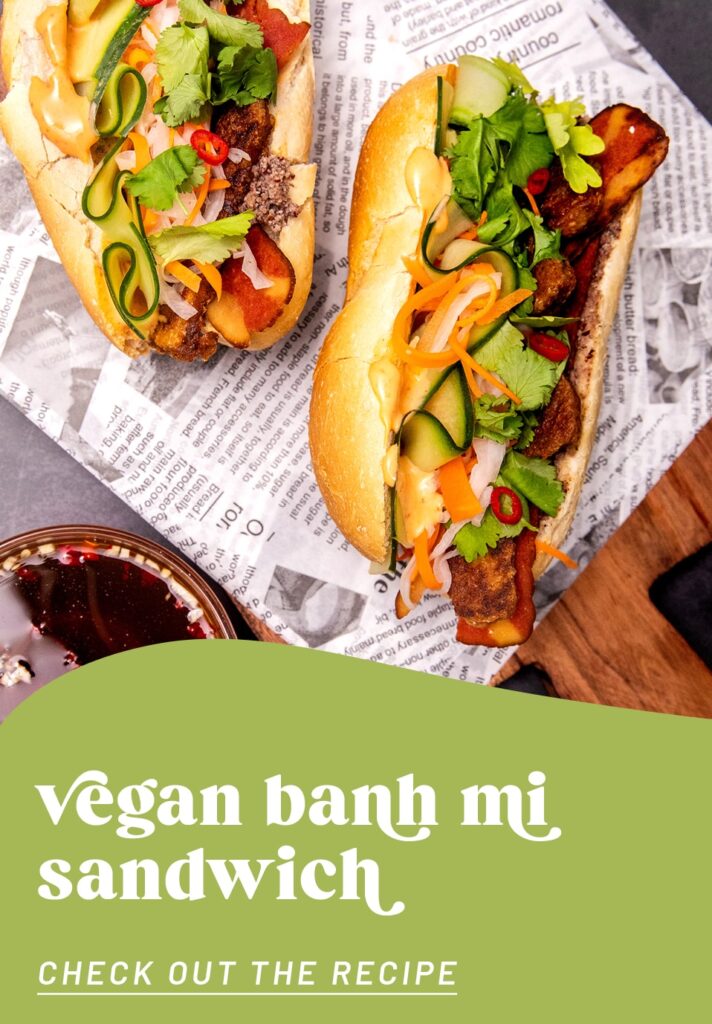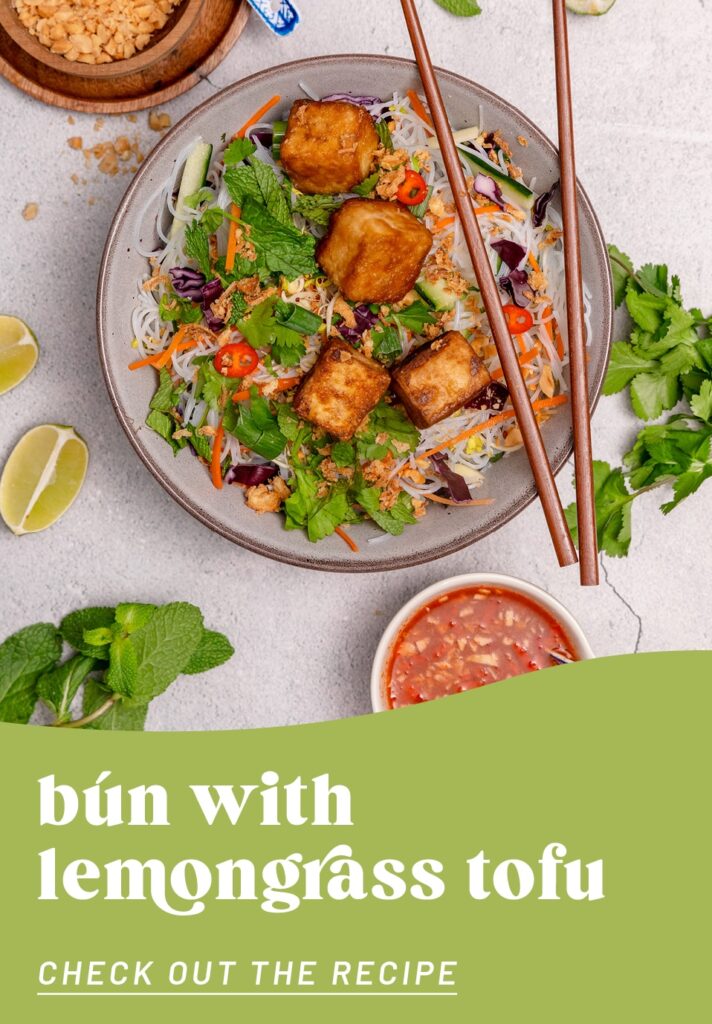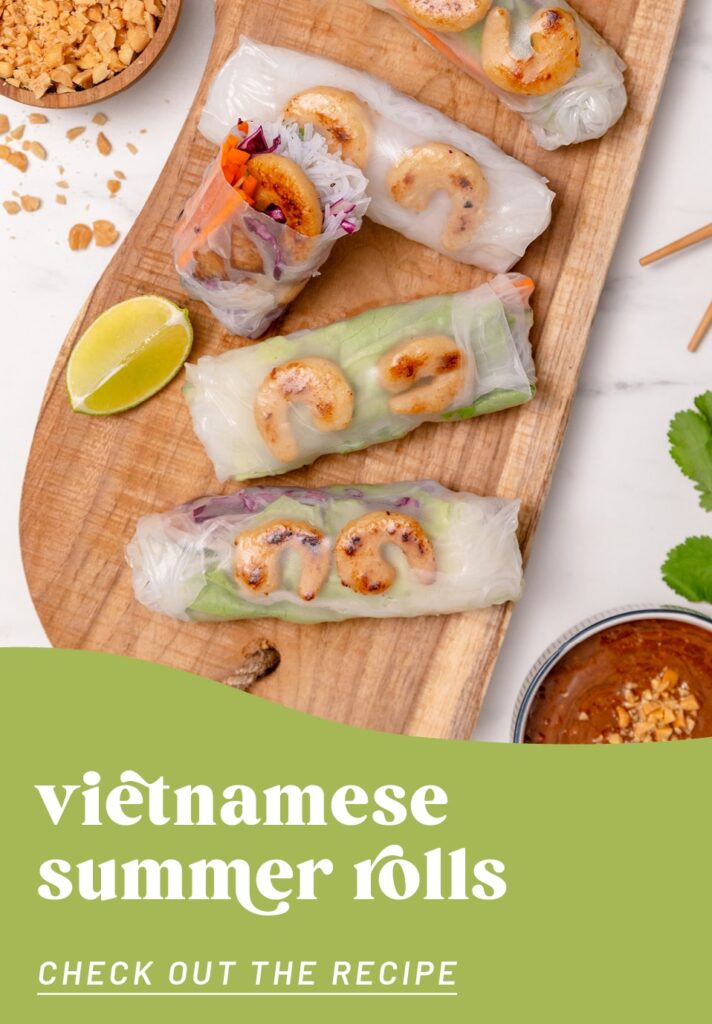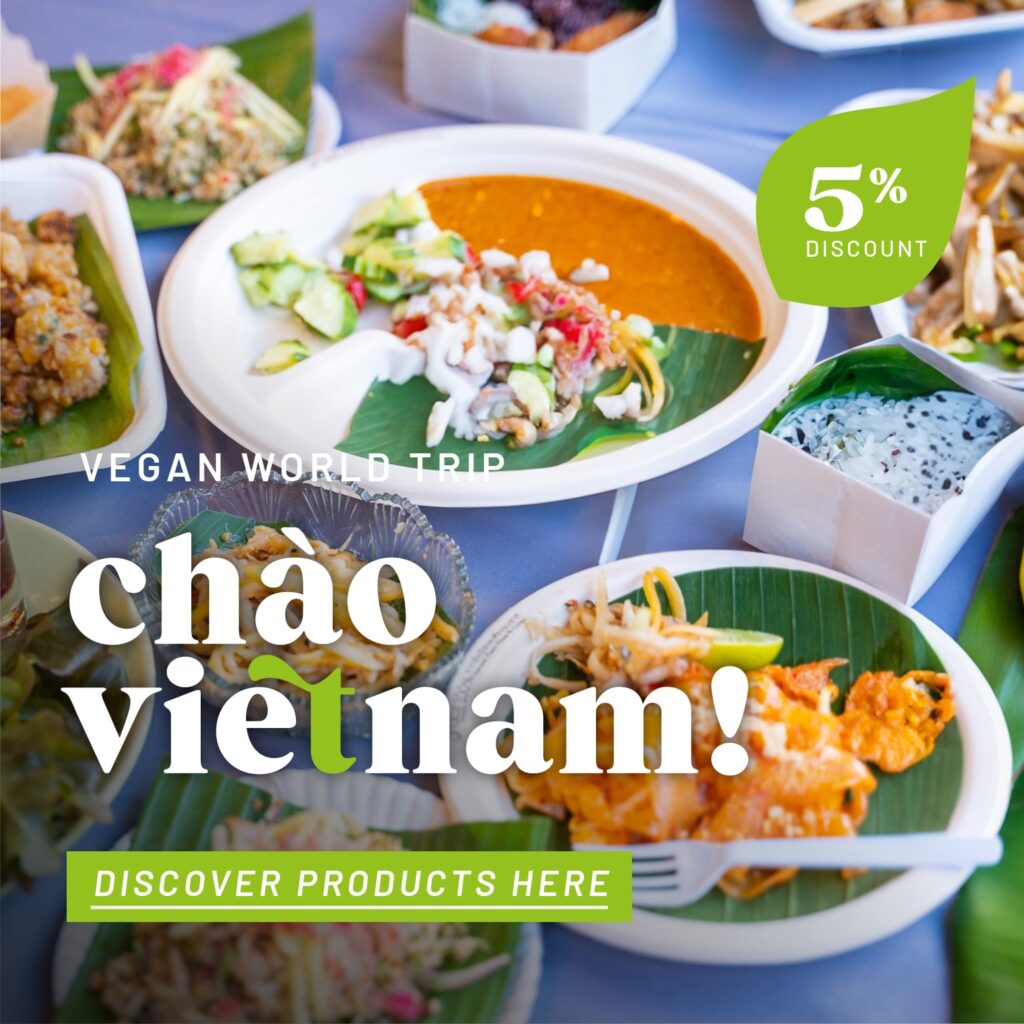VEGAN WORLD TRIP
Vegan-Yum in Vietnam

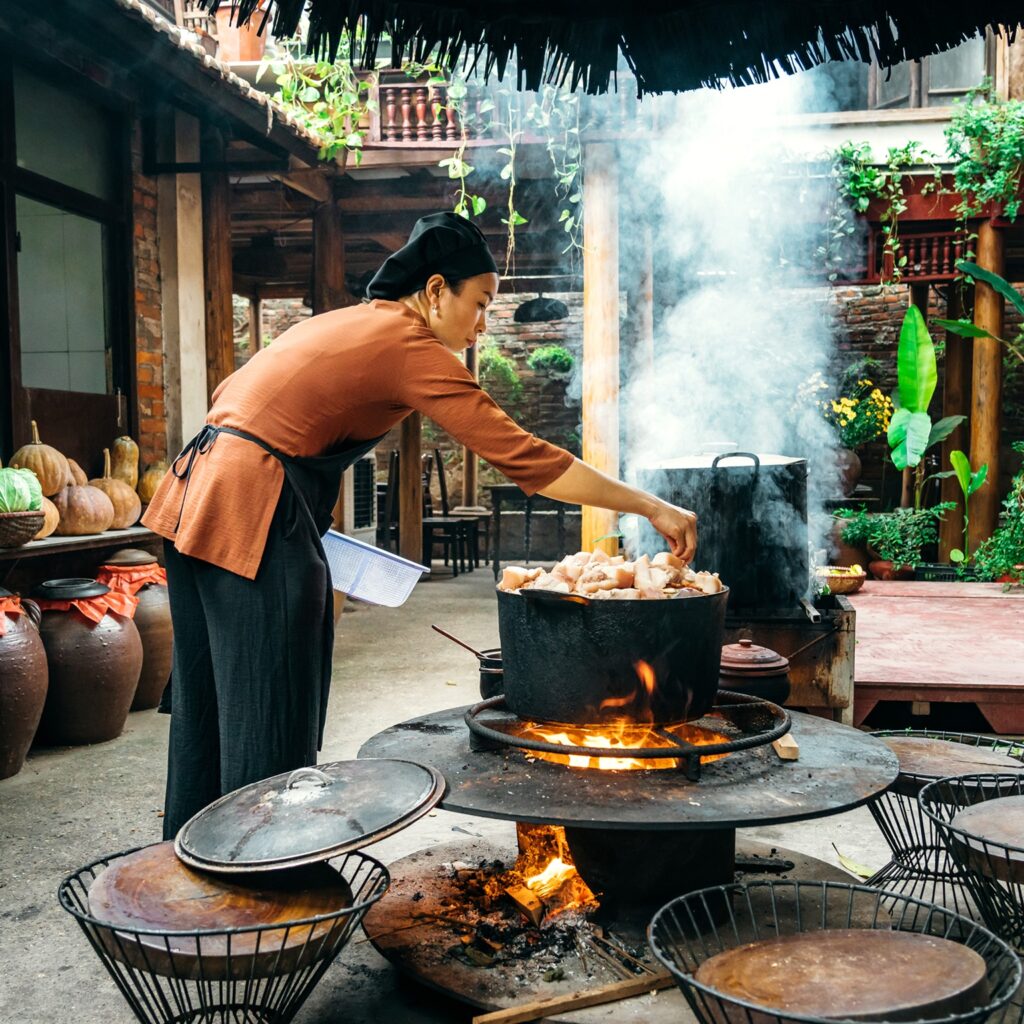
Our journey will take us from the cool regions in the north of Vietnam, on the border with China, to the humid south of the country. Our search for the best plant-based delicacies that this wonderful region has to offer will take us to a country which meanders its way along the coast of southeast Asia, and is often unfamiliar even to the most experienced of travelers to the Asian continent.
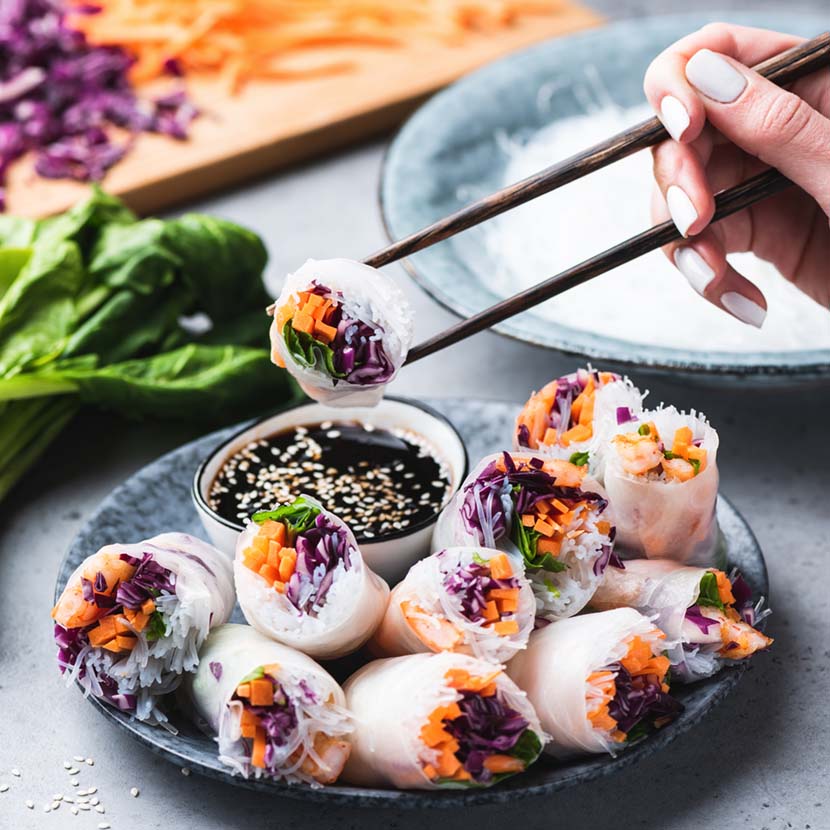
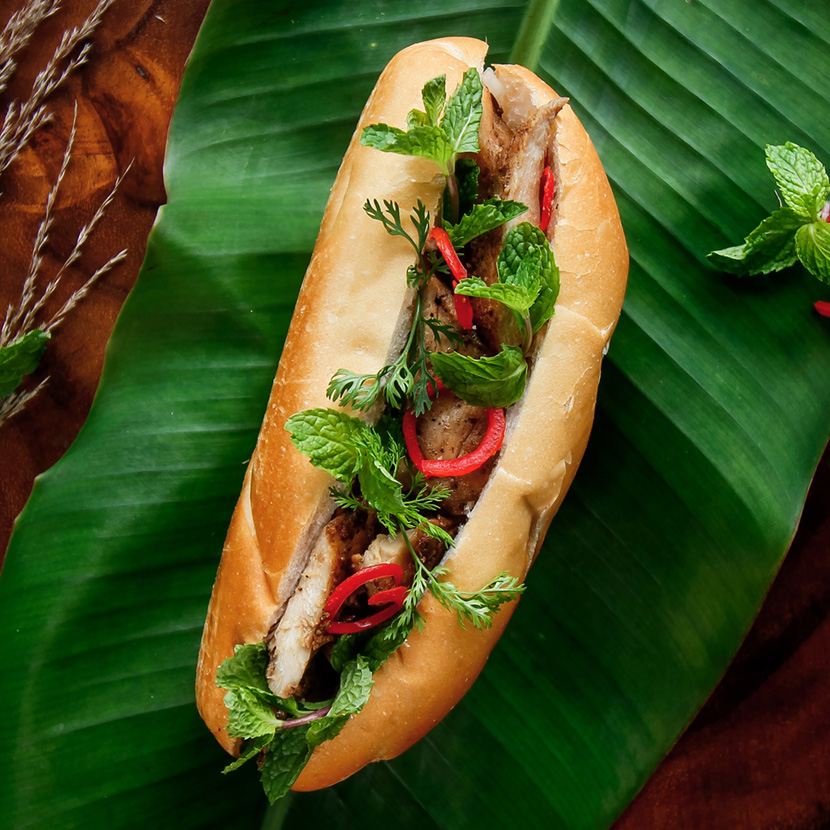
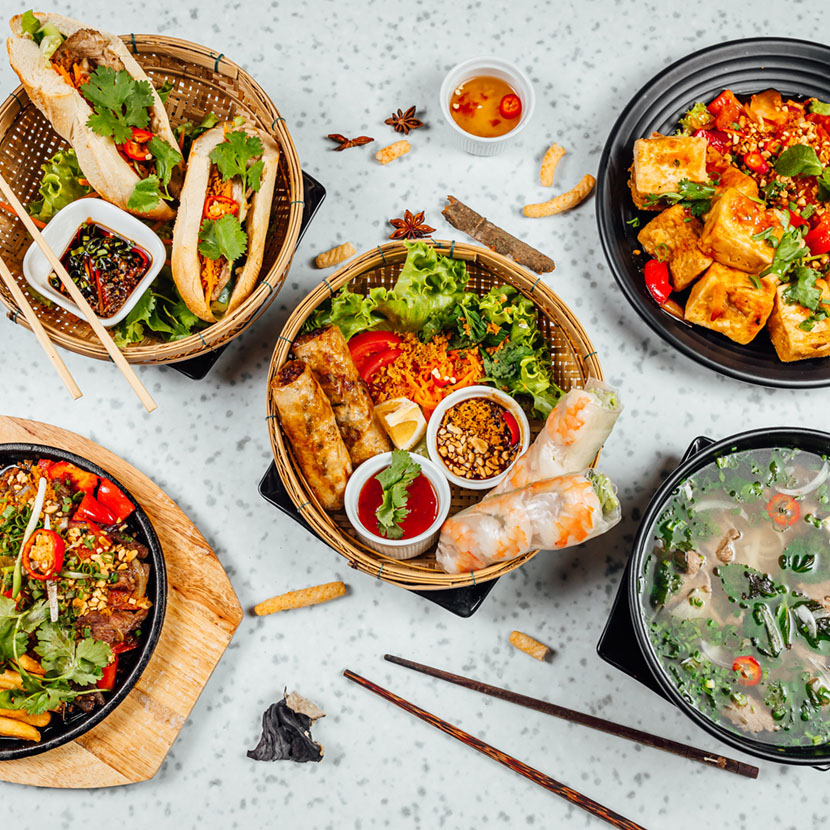
A land of wonders
Vietnam, which is surrounded by China, Laos and Cambodia, is a country of contrasts. From the buzzing metropolises of Hanoi and Ho Chi Minh City (formerly known as Saigon) to the imperial splendor of Huếs, the spectacular Hạ Long Bay, idyllic beaches, mystical grottos and rice terraces, and to the lush green landscapes of the Mekong Delta – Vietnam has a whole kaleidoscope of experiences to offer. The Golden Bridge in Đà Nẵng, which is supported by giant stone hands, is just one of many great tourist attractions. And if you’re looking to interact with people who live in close quarters with nature, and to immerse yourself in authentic culture, Vietnam is bound to give you what you’re looking for. So: Vietnam, here we come! By the way, did you know that some Vietnamese people can speak German? That’s because during this country’s colorful history, there was a friendship between Vietnam and the former East Germany.

The taste of Vietnam: a mosaic of flavors and aromas
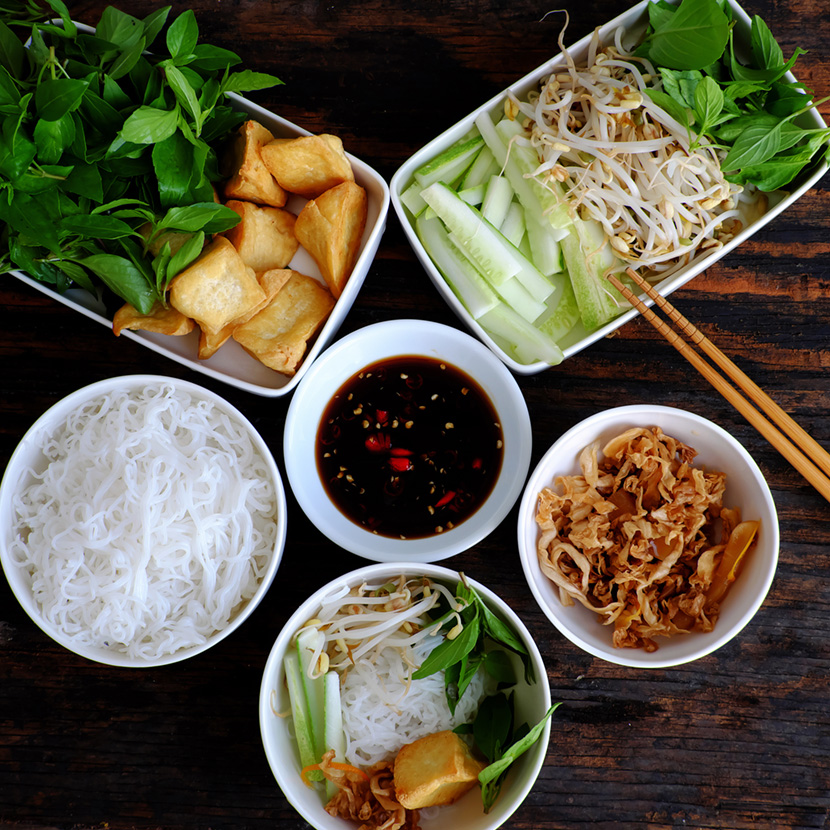
Vietnamese cuisine is a symphony composed from the five basic tastes: sweet, sour, salty, bitter, and umami. Each dish is a delicate balance of these flavors, rounded off with the freshness of herbs and the mild heat of chili. It’s typical for as many basic tastes as possible to be included, which leads to some intense combinations – in seemingly endless variations.
Unlike Thai cuisine, which often has more powerful, spicier flavors, Vietnamese cuisine is characterized by more subtle seasoning, and an emphasis on fresh ingredients. While Thai basil does feature in Vietnamese cuisine, there are other more typically Vietnamese herbs and spices that are used: such as Vietnamese coriander, Vietnamese balm, betel leaves (for heat), mint, and lemongrass. The latter is the classic acidic component in the country’s traditional cuisine. But Vietnam is also home to other aromatic plants which are completely unfamiliar to us: such as rau om or water dropwort.
Fish sauce is an indispensable component of Vietnamese dishes, which has a wonderful vegan substitute in the form of No-Fish-Sauce. Prawns can also be substituted with plant-based alternatives such as Shrymps from Happy Ocean, or alternatives to crab from Lord of Tofu. Equally versatile and popular are vegan Hoisin sauce and sweet chili sauce. Did you know that Vietnamese cuisine was also shaped by Chinese and French influences? Baguettes and coffee were introduced during the colonial era, while China contributed a love of noodles and soy sauce. The global success of Vietnamese food demonstrates how it has managed to blend these influences in an exciting, harmonious way.
North and South: Two worlds of flavor, double the plant-based goodness
The former border between north and south Vietnam runs through the picturesque Imperial City of Huế. While the north is known for its colorful, somewhat milder dishes, the south will win you over with its sweeter, bolder flavors. The rate of development in Hanoi isn’t quite as dramatic as it is in Ho Chi Minh City, for example, which means you’ll still find small cookshops with a special romantic touch.
Vietnamese dishes really do mainly consist of vegetables and fruit – perfect for fans of vegan food! And the dishes tend to be low in fat. They don’t feature as much meat as in Europe, and have less oil than Chinese cuisine, for example. And there are crucial differences in terms of what you’ll find in what area:
North Vietnam is a good option for anyone who isn’t so keen on spicy food, because the cuisine there tends to be characterized by moderate heat and sweetness. The food is therefore very colorful and pleasing to the eye! Salty and umami are the dominant flavors here. Alongside a wide range of vegetables, people often serve prawns, crab, or fish. Luckily, we have some great alternatives for you when it comes to veganizing your favorite dishes. Typically north Vietnamese dishes include Bun (rice noodle salad), phở (soup) and Thanh Tri cakes with steamed rice paper.
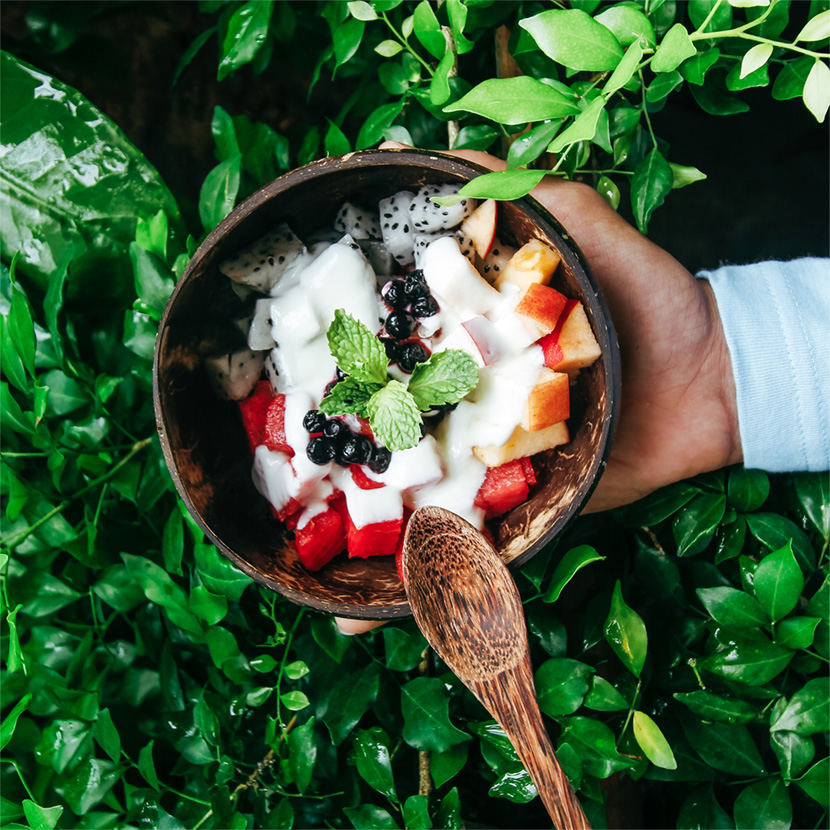
From imperial splendor to street food
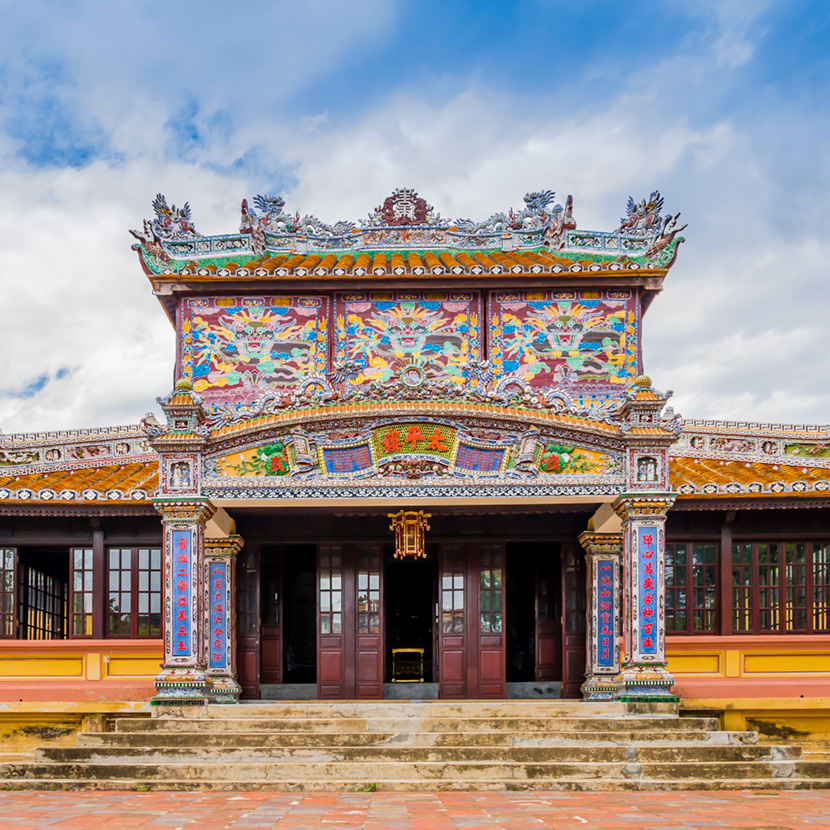
You could almost say that the further south you go, the hotter and sweeter the food becomes. In the south, especially, you’ll notice the influences of other cuisines, such as that of the Khmer people from Cambodia, but also the cuisines of Laos and Thailand. People say that the dishes in south Vietnam are not as complicated as the imperial cuisine of Huế. Many specialties from this region are sweetened with palm sugar. Coconut oil and coconut milk are also popular – and they’re great at carrying flavor. Sticky rice is typical for South Vietnam – as are rice noodles, spring rolls, or freshwater fish.
In central Vietnam, people like their food just as salty and flavorful, but with some acidity. In the former imperial city especially, rather complex dishes are often served, which get a kick of acidity from lime, tomato sauce or shrimp paste. Any dishes with vermicelli or fried noodles are popular here.
From imperial splendor to street food
In Huế, there was once a legendary imperial menu with 100 courses – which is illustrative of the huge diversity of dishes to be found here. Nowadays, the town is full of iconic markets with a vibrant street food scene which honors these traditions in a contemporary, accessible way.
In the Vietnamese tradition – which encompasses more than just the imperial tradition – food is there to be enjoyed with all the senses. The phrase “you eat with your eyes” is key to the appealing way the dishes are presented. Even the colors are supposed to harmonize!
The well-balanced aromas mentioned appeal to your sense of smell first, before pleasing your tastebuds. In terms of texture, you’ll find everything from crispy deep-fried foods to crunchy beansprouts and silky tofu pieces. And, would you believe it: apparently, Vietnamese people “eat with their ears” too! Maybe you’re also familiar with the typical crunch of rice cakes – or of peanuts, which are widely used as a topping. Talking of peanuts, they’re also really delicious in satay sauces.
Just to make things absolutely clear, we didn’t manage to get through 100 courses. ;- ) But there was one thing we did get used to rather quickly, and which is part of Vietnamese people’s daily routine…
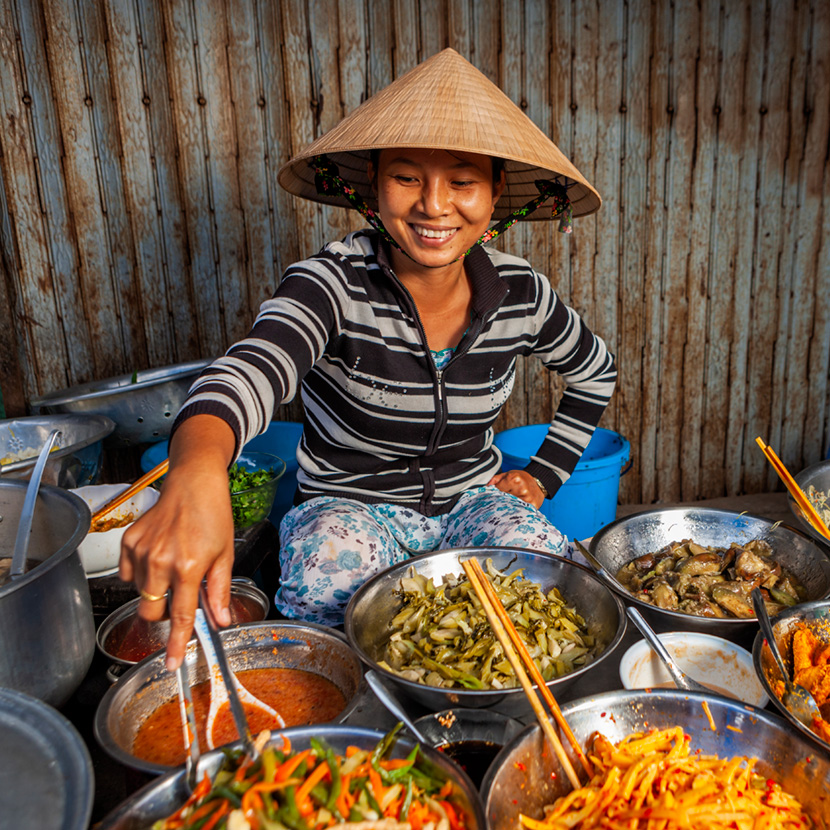
Coffee – as you’ve never tasted it before
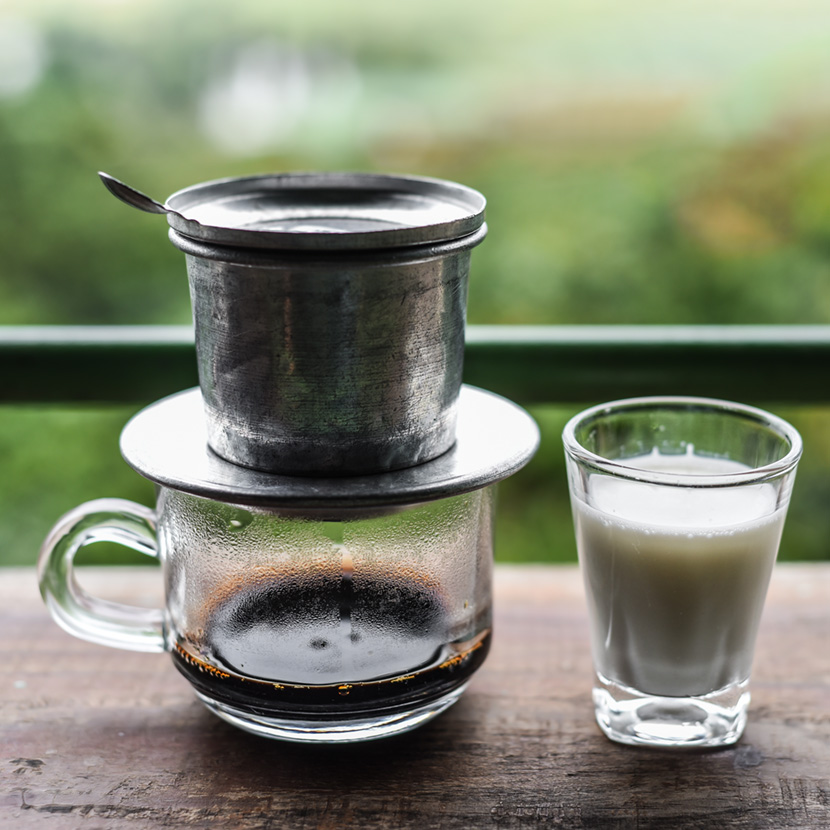
Vietnam, one of the world’s leading coffee producers, is famous for its strong, aromatic coffee – especially in the south of the country. It’s made from robusta beans, which have a very powerful flavor. The chocolatey notes come about thanks to the particular way in which the beans are roasted, and the coffee being fermented with cocoa. The coffee is served at the table in special cups with a filter called a phin, and brewed there. Typically, the Vietnamese drink their coffee with condensed milk.
Our tip: You can get Vietnamese coffee from your local Asian supermarket and, of course, from Velivery – so why not give it a try? Instead of condensed milk, use Nature’s Charm Coconut alternative to condensed milk – and before you know it, you’ll feel like you’re sipping coffee beside the Mekong River.
The culinary highlights of our journey through Vietnam
1. Hanoi: Vegan Phở
Phở is a traditional Vietnamese noodle soup. The vegan version features wide rice noodles, aromatic mushrooms, and hearty tofu. These ingredients are served in a deep, rich broth seasoned with star anise, cinnamon and other spices. Fresh cilantro, spring onions and a squeeze of lime give the dish a fresh, vibrant flavor.
2. Sapa: Seasoned tofu with mountain herbs
Sapa is home to tofu dishes which are unique in terms of how they’re prepared: the tofu is seasoned with a variety of mountain herbs, giving it an unparalleled round, earthy aroma. Often fried or grilled until crispy on the outside and soft on the inside, it is then served with fresh salads or in stews.
3. Huế: Vegan Bun Bo Hue
Bun Bo Hue is a spicy, aromatic soup which is popular in Huế. The vegan version uses jackfruit instead of meat. Lemongrass, chili and various other spices give the broth a powerful flavor. Added to this are rice noodles, and a variety of fresh herbs. We have a great vegan version of the recipe (Link) for you here.
4. Spring and summer rolls
If you’ve ever wondered what the difference between Chinese and Vietnamese spring rolls is, then look no further: While the filling in the Chinese roll mainly consists of white cabbage, glass noodles, carrots, mushrooms, onions and minced meat, the Vietnamese version also features other vegetables such as kohlrabi. Also, while rice paper is used for Vietnamese spring rolls, the Chinese ones are made from wan-tan dough.
The spring roll’s “big sister” is the summer roll. In contrast to spring rolls, summer rolls don’t need to be deep fried – they’re ready to eat right after rolling. They’re eaten cold with a dip. Options include chili sauce, peanut dip or Hoisin sauce. Why not try our recipe with tofu and/or a vegan alternative to prawns?
5. Đà Nẵng: Vegan Banh Mi
Banh Mi is a Vietnamese sandwich served in a crispy baguette. The vegan version is filled with vegan spreads, fresh vegetables such as cucumber, cilantro and pickled carrots, often rounded off with spicy sauces or vegan mayonnaise.
6. Hoi An: Vegan Cao Lau
Cao Lau is a specialty from Hoi An which consists of thick noodles served in light soy sauce. The vegan version features mushrooms and vegetables, which provide additional flavor and texture. Typically garnished with crispy croutons and fresh herbs, it’s a wonderfully hearty dish.
7. Ho Chi Minh City (Saigon): A great range of vegan street food
You’ll find numerous vegan options in Ho Chi Minh City – especially at the night markets. One popular dish is vegan Banh Xeo (crispy pancakes), which are filled with tofu, mushrooms and beansprouts, and served with fresh herbs. Vegan versions of Com Tam, or broken rice, are often served with grilled tofu or vegan meat substitutes. Simply divine!
8. Vegan breakfast
A typical Vietnamese breakfast could be a savory Banh Mi or a steaming bowl of phở, which are both available in vegan variations, and offer you a satisfying, nutritious start to the day.
Another popular rice soup is “Chao”, a rice porridge similar to a Chinese congee. In Vietnam, chao is often served with vegetables, mushrooms, and sometimes with vegan meat substitute products. It’s particularly popular because it’s so easy to digest.
Not only are these soups nutritious and filling – they also offer you a warming, soothing meal at the start of the day. Vietnamese culture places great importance on a substantial, healthy breakfast, and these soups are a central element of this. People tend not to eat sweet things for breakfast.
9. Desserts
For dessert, there are often sweet rice cakes – which can be made with numerous different fillings. You must make sure you try a selection of the fresh, tropical fruits which grow so well in Vietnam’s fertile soils. What a taste experience!
Chè is a type of sweet Vietnamese soup or pudding, of which there are many variations. To make this dessert, white beans are boiled until soft before being combined with sugar and coconut milk to make a sweet, creamy mixture. It can be served hot or cold, and often comes with tapioca pearls or sticky rice A008673. It’s a perfect example of the varied ways in which beans are used in Vietnamese cuisine – which include sweet dishes.
And, if you ever do make a trip to Vietnam, we recommend these three top restaurants:
- Hanoi: „Minh Chay“ – a paradise for anyone looking to try vegan pho.
- Đà Nẵng: „Am Thuc Chay“ – known for its creative vegan interpretations of local classics.
- Ho Chi Minh City: „Hum Vegetarian“ – a stylish and modern oasis in the city.
In a nutshell: Vietnam is a vegan’s paradise
A culinary journey through Vietnam will offer you a rich variety of taste experiences, with each dish having been shaped by its own tradition and numerous influences. The diversity and creativity of Vietnamese cuisine, especially in its vegan form, really is remarkable – which, of course, is also linked to Buddhist philosophy. Our journey has given us countless brilliant ideas, aromas and new favorite dishes. Especially as a vegan, Vietnam is a country where you’ll be absolutely spoilt for choice in terms of yummy food! J
But our “flavor expedition” was more than just a journey. It was an insight into the soul of a country which is rich in history and culture, and offers unparalleled hospitality. A country which is just as diverse and colorful as its cuisine!
The Recipes
We were very inspired by Vietnamese cuisine and have created vegan versions of some of our favorite dishes for you. So you can easily bring the street food and feel-good cuisine of Vietnam home with you.
